Pacific Crest Trail Bear Canister Requirements
If there’s one piece of gear that causes Pacific Crest Trail hikers the most headaches, it’s the bear canister. Most northbound PCT thru-hikers pick up their bear canisters at Kennedy Meadows and then ditch them at either Sonora Pass (Kennedy Meadows North/Bridgeport) or Echo Summit (South Lake Tahoe/Echo Lake); most can’t wait to be rid of them.
The logistics of buying, renting, shipping, and returning a bear canister can be a pain, especially if you’re not expecting to use it beyond your time on the PCT.
Much of the guidance overlaps between land management agencies, but there are some inconsistencies, and the rules can sometimes be confusing (even when speaking to rangers). The most surefire way to ensure you comply is to carry an approved bear canister.
A Note on Counterbalancing (i.e., the bear hang)
Although counterbalancing your food is acceptable when you don’t have a bear canister and no bear box is available, it isn’t practical in many situations. The areas passed through in Inyo National Forest and Sequoia/Kings Canyon National Park (SEKI) provide few opportunities for a proper counterbalance.
It’s a common misperception that the counter-balance method is a good way to protect food from bears. However, because bears are so adaptable, many have learned to obtain counter-balanced food. This method generally does not work in these parks. Only use this option if the others are not available.
–SEKI
It is extremely difficult to find an adequate tree and properly counter balance the bags. Counter balancing is not as effective as it once was. Even when it is hung properly, bears may figure out a way to get your food – some bears will chew the branches off trees to get the food. The counter-balance method is only a delaying tactic. Be prepared to actively defend your food. You may need to repeatedly scare bears away from your camp.
–Inyo National Forest
SEKI has more information on counterbalancing (bear hanging) your food here.
Sequoia and Kings Canyon National Parks
Sequoia and Kings Canyon National Parks (SEKI) only require bear canisters in three specific areas. For more information, check out the map and area descriptions. According to the park information page, outside of these areas, you must use food storage boxes (i.e., bear boxes) or the counterbalance method (i.e., bear hang).
- Rock Creek Drainage: North of where the PCT crosses into Sequoia National Park (east of Siberian Pass) and south of Guyot Pass (northeast of Mount Guyot). If you’re using FarOut, between (northbound) miles 753.9 and 762.9.
- Rae Lakes Loop Area: North of Forester Pass and south of Pinchot Pass. Between FarOut (northbound), miles 779.5 and 807.1.
- Dusy Basin & Palisade Basin: All cross-country areas and anywhere along the trail between the PCT and Bishop Pass (note: this is not on the PCT but is instead along the route used to exit/enter via Bishop Pass)

Inyo National Forest
Much of the Pacific Crest Trail through the Sierra Nevada passes through Inyo National Forest, which encompasses many of the wilderness areas hikers pass through during their time in the Sierra (including the Ansel Adams Wilderness, Golden Trout Wilderness, and the John Muir Wilderness).
In areas of Inyo that do not require a bear canister, you are required to use a counterbalance hanging technique. For instructions on how to properly counterbalance hang your food (something that’s very difficult to do in the Sierra because of the lack of adequate trees), find instructions on the SEKI website.
Note that numbers one through four are not on the PCT. However, they are commonly used as entry/exit points for PCT hikers while resupplying in the Eastern Sierra.
- Horseshoe Meadows: Between the trailhead and Cottonwood Pass, between the trailhead and New Army Pass, and between the trailhead and (Old) Army Pass. The trail to Trail Pass does not require a bear canister.
- Whitney Zone: Between Trail Crest (west) and Whitney Portal (east)
- Onion Valley: Between the trailhead and Kearsarge Pass
- South Lake: Between the trailhead and Bishop Pass (note: this is not South Lake Tahoe, and most people will not use Bishop Pass to enter/exit the Sierra from the PCT, but it’s an option)
- Mammoth Area: Between Lake Virginia (south) and the outlet of Duck Lake (north); between northbound FarOut miles 890.7 and 895.9
- Mammoth Area: Between Crater Creek (south) and Donohue Pass (north); between northbound FarOut miles 902.6 and 929.6
Inyo National Forest provides this map of the areas requiring bear canisters (the areas in red). The areas in green require either a bear canister or a counterbalance hanging technique.
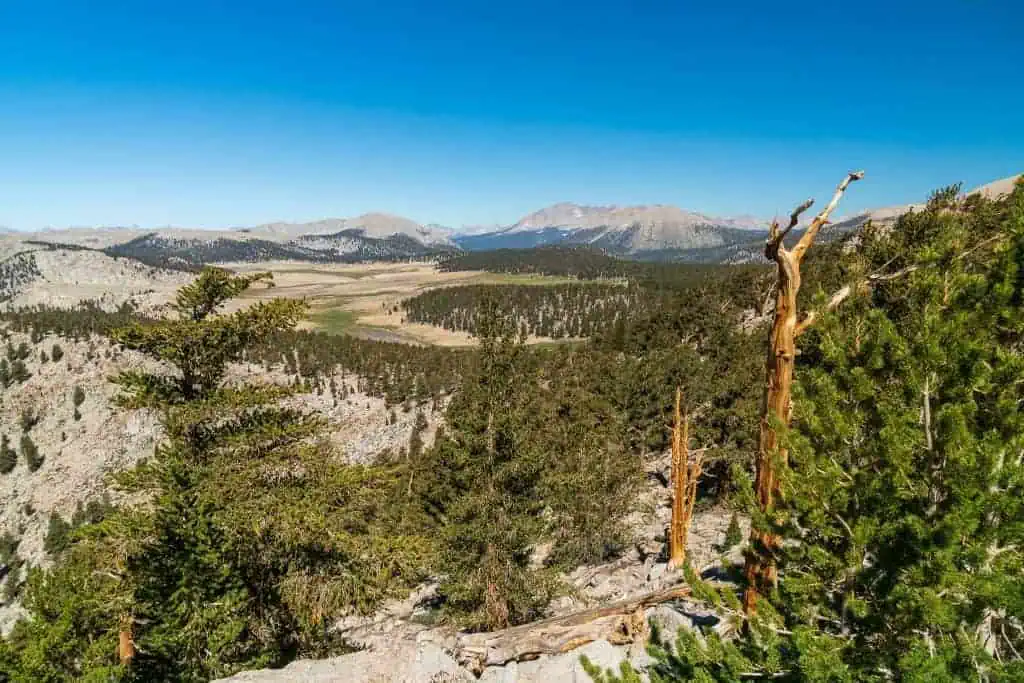
Yosemite National Park
Yosemite is no-nonsense when it comes to food storage requirements. Bear canisters are required, period. No counterbalancing, no bear boxes (outside developed campgrounds), and no excuses.
This is the one section of the Pacific Crest Trail where you can’t escape a heavier pack. The only bear boxes located on (near) the Pacific Crest Trail through Yosemite are at the Tuolumne Campground (there is a hiker/biker camp here, but you can also reserve a campsite) and Glen Aulin (reservations required).
The Pacific Crest Trail is within Yosemite National Park between FarOut (northbound) miles 929.6 and 997.1.
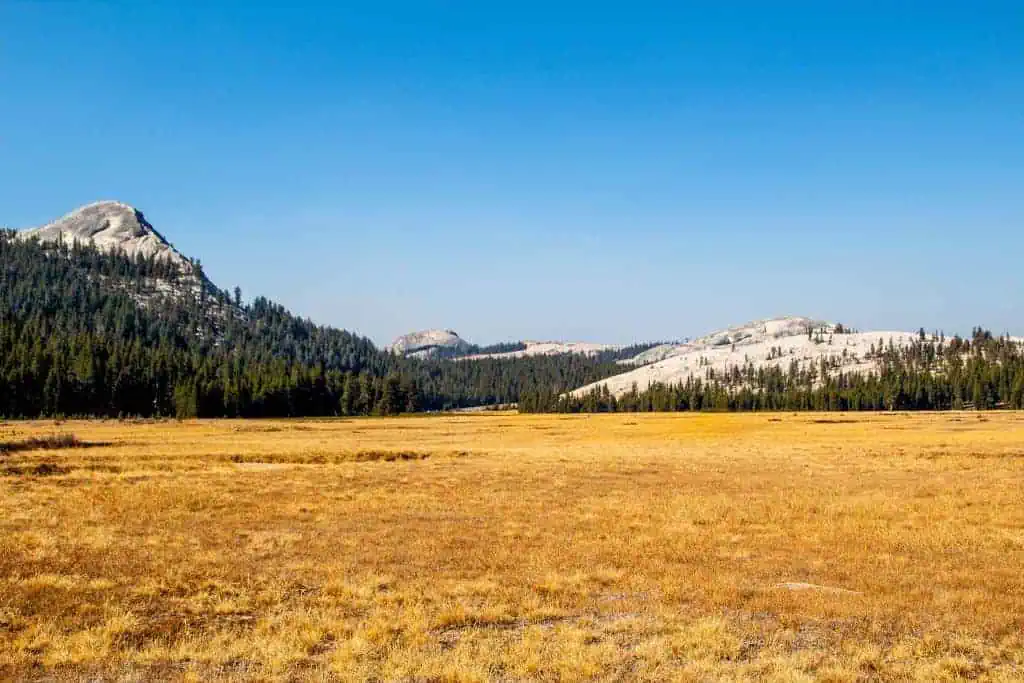
Lake Tahoe Basin Management Unit and Desolation Wilderness
Pacific Crest Trail hikers (and all other users) are required to use “proper storage of food and refuse (garbage) on all National Forest System lands in the Lake Tahoe Basin.” What “proper storage of food” means is ambiguous except for in Desolation Wilderness, where it’s specified that overnight visitors must use “hard-sided bear-proof containers.”
What this essentially means is that the best practice (and possibly the law – still looking for clarification) is that you’ll need to carry a bear canister between Echo Summit (Highway 50/South Lake Tahoe) and Donner Summit (Interstate 80/Truckee).
Updated July 18, 2022: Bear canisters are required in Desolation Wilderness on the western side of Lake Tahoe in Northern California. Desolation Wilderness is north of where the Pacific Crest Trail crosses Highway 50 at Echo Summit and south of Barker Pass (the closest road access to the PCT north of Desolation Wilderness).
PCT hikers wanting to camp in Desolation Wilderness (a beautiful place to spend time) will need an approved, hard-sided bear canister (no Ursacks allowed).
The approximate northbound mile markers for Desolation Wilderness on FarOut are from 1096.6 to 1118.3.
You can find the text of Forest Order 03-22-11 here.

Lassen Volcanic National Park
Lassen Volcanic National Park, like Yosemite, is no-nonsense.
If you plan on camping in Lassen Volcanic (northbound FarOut miles 1344.8 to 1364.1), you will need one of the approved bear-resistant containers for Lassen. Unlike elsewhere on the Pacific Crest Trail, the Ursack Major and the Ursack AllMitey are approved for use in Lassen.
Again, as long as you don’t plan camping within the park boundary, you don’t need a bear canister. Lassen’s backcountry has no bear boxes, but there is a developed campground, Warner Valley, three miles (5 km) north of where the PCT crosses the park’s southern boundary.
There are eight reserved sites at Warner Valley Campground and nine first-come, first-served sites. There is no hiker/biker campsite. If you want to reserve a site at Warner Valley Campground, you can do so here.
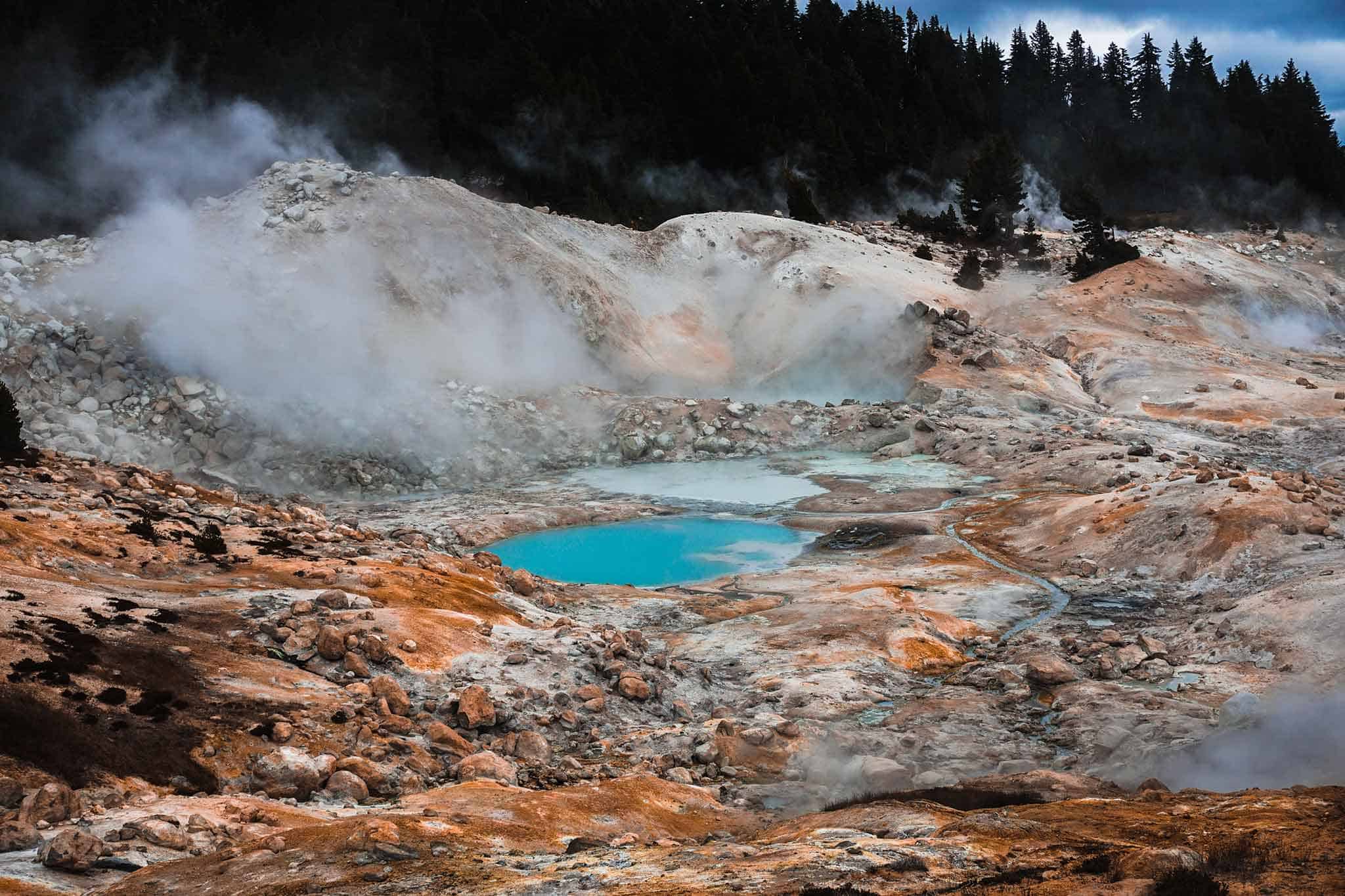
Okanogan-Wenatchee and Mt. Baker-Snoqualmie National Forests
Updated September 16, 2024: Food storage is required for all campers in Okanogan-Wenatchee and Mt. Baker-Snoqualmie National Forests in Washington. The southern boundary of where the Pacific Crest Trail enters the Okanogan-Wenatchee National Forest is Goat Rocks Wilderness, and the PCT remains within the National Forest until reaching Canada (yes, it’s nearly all of Washington).
According to the forest orders, food can be “suspended at least 10 ft / 3 m clear of the ground at all points and 4 ft / 1.22 m horizontally from any supporting tree or pole.” However, when this is impossible, food must be stored “in bear-resistant container certified through the Interagency Grizzly Bear Committee.” This means the Ursack Major and the Ursack AllMitey are allowed.
The approximate northbound mile markers for the Okanogan-Wenatchee and Mt. Baker-Snoqualmie National Forests on FarOut are from 2277 (Goat Rocks Wilderness) and 2653 (the northern terminus at the US-Canada border).
You can find the text of Okanogan-Wenatchee Forest Order 06-17-00-24-01 here and Mt. Baker-Snoqualmie National Forest Order 06-05-23-02 here.
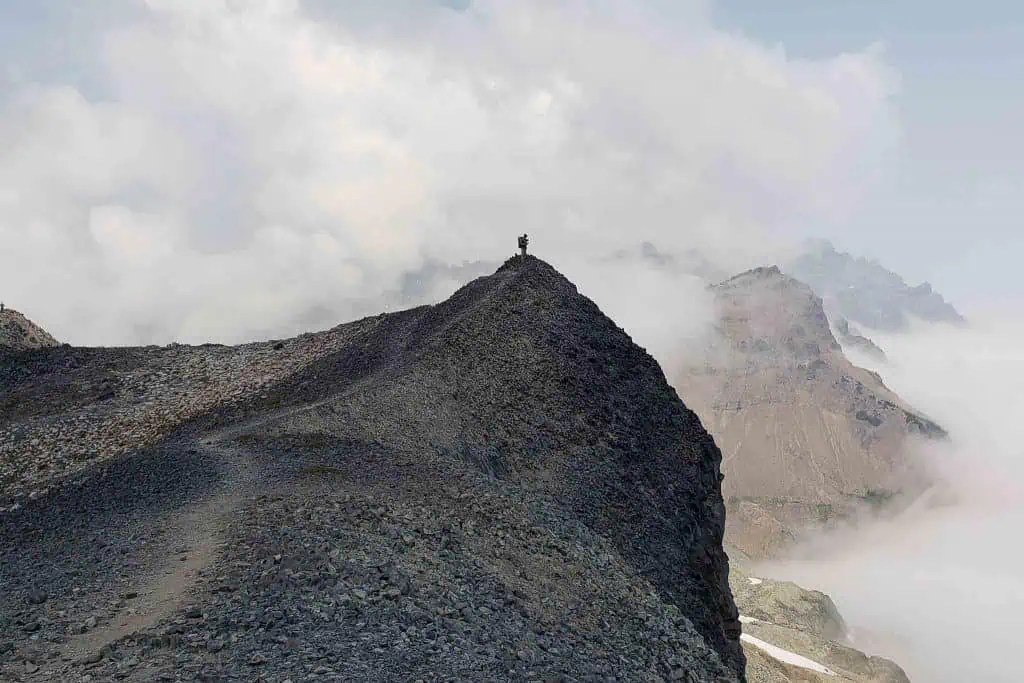
Approved PCT Bear Canisters
The following is a list of all the bear canisters approved for use on and along the Pacific Crest Trail. This list is subject to change. Here is the most current (although obviously outdated) list of approved containers for SEKI and Yosemite. As far as I can tell, Inyo National Forest does not provide a list of approved containers (but it’s probably safe to assume that anything good enough for SEKI or Yosemite will have you covered in Inyo as well).
For more on bear canisters, check out my post on the best PCT bear canisters.
| Bear Canister | Price | Weight | Capacity | Materials |
|---|---|---|---|---|
| BearVault BV425 | $77 | 28 oz / 800 g | 305 in3 / 5 L | Plastic |
| BearVault BV450 Jaunt | $84 | 33 oz / 936 g | 440 in3 / 7.2 L | Plastic |
| BearVault BV475 Trek | $90 | 37 oz / 1.03 kg | 565 in3 / 9.3 L | Plastic |
| BearVault BV500 Journey | $95 | 41 oz / 1.162 kg | 700 in3 / 11.5 L | Plastic |
| Counter Assault Bear Keg | $80 | 60.8 oz / 1.724 kg | 716 in3 / 11.7 L | Plastic |
| Model 812 Garcia Backpackers' Cache | $100 | 44 oz / 1.247 kg | 610 in3 / 10 L | Plastic |
| Bare Boxer | $80 | 22 oz / 634 g | 275 in3 / 4.5 L | Plastic |
| Udap NO-FED | $75 | 38.4 oz / 1.089 kg | 608 in3 / 9.96 L | Plastic |
| LIGHTER1 Lil' Sami | $130 | 30 oz / 850 g | 305 in3 / 5 L | Plastic |
| LIGHTER1 Big Daddy | $140 | 36 oz / 1.021 kg | 650 in3 / 10.7 L | Plastic |
| Wild Ideas Bearikade Scout | $275 | 28 oz / 794 g | 500 in3 / 8.2 L | Carbon fiber |
| Bearikade Weekender | $309 | 31 oz / 879 g | 650 in3 / 10.7 L | Carbon fiber |
| Bearikade Blazer | $333 | 33 oz / 936 g | 750 in3 / 12.3 L | Carbon fiber |
| Bearikade Expedition | $370 | 36 oz / 1.021 kg | 900 in3 / 14.75 L | Carbon fiber |
Resources
- The Best PCT Bear Canisters
- Counterbalancing food instructions
- Overview map of Sierra food storage requirements
- Inyo National Forest food storage requirement map
- SEKI food storage requirement map
- SEKI area descriptions for bear canisters
- SEKI approved bear canisters
- Yosemite bears and food storage
- Yosemite approved bear canisters
- Yosemite Tuolumne Meadows Campground
- Yosemite Glen Aulin Reservations
- Lassen Volcanic food storage requirements
- Lassen Volcanic approved storage containers
- Lassen Volcanic Warner Valley Campground
- Warner Valley Campground Reservations (Recreation.gov)
- PCTA bear canister requirements page
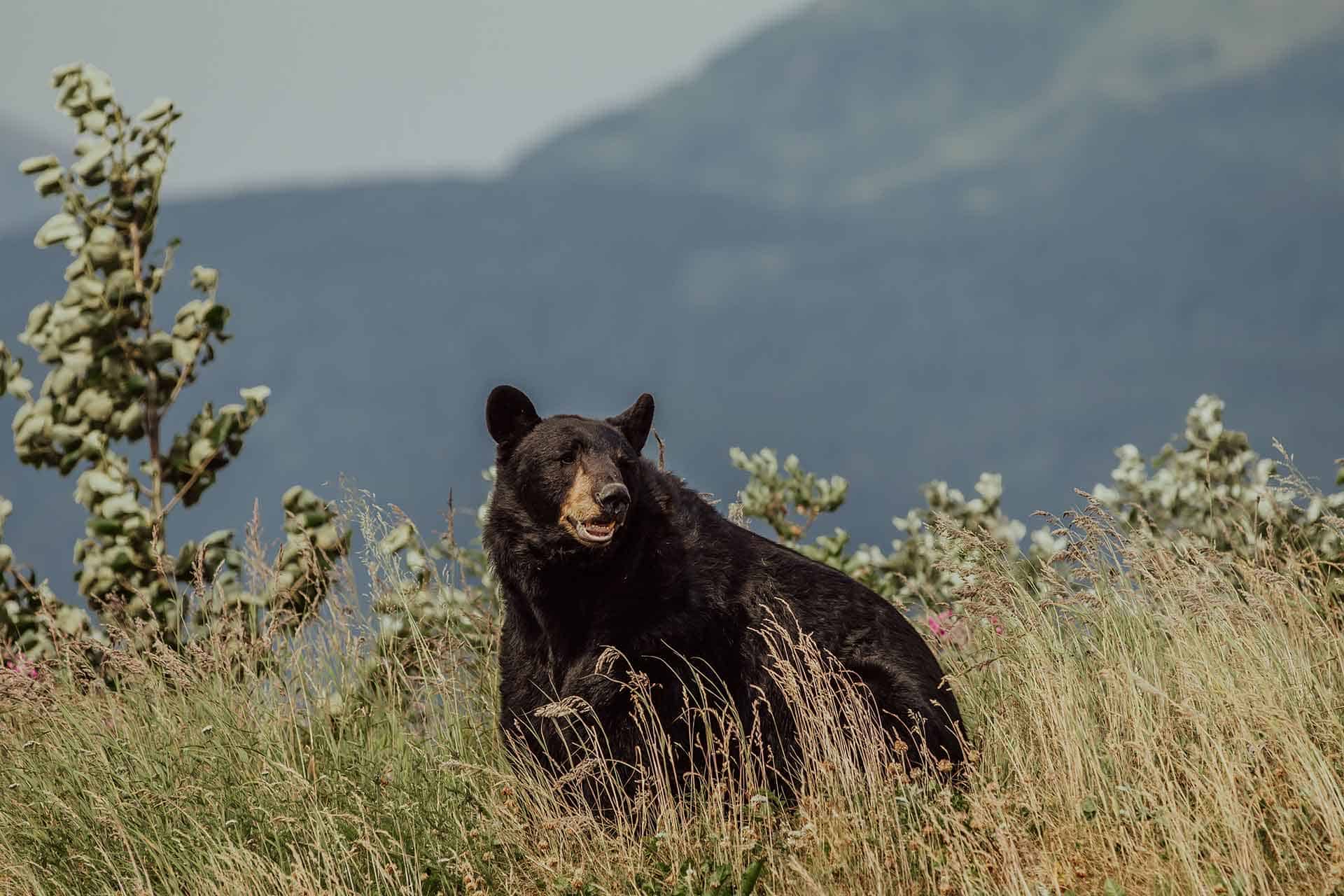
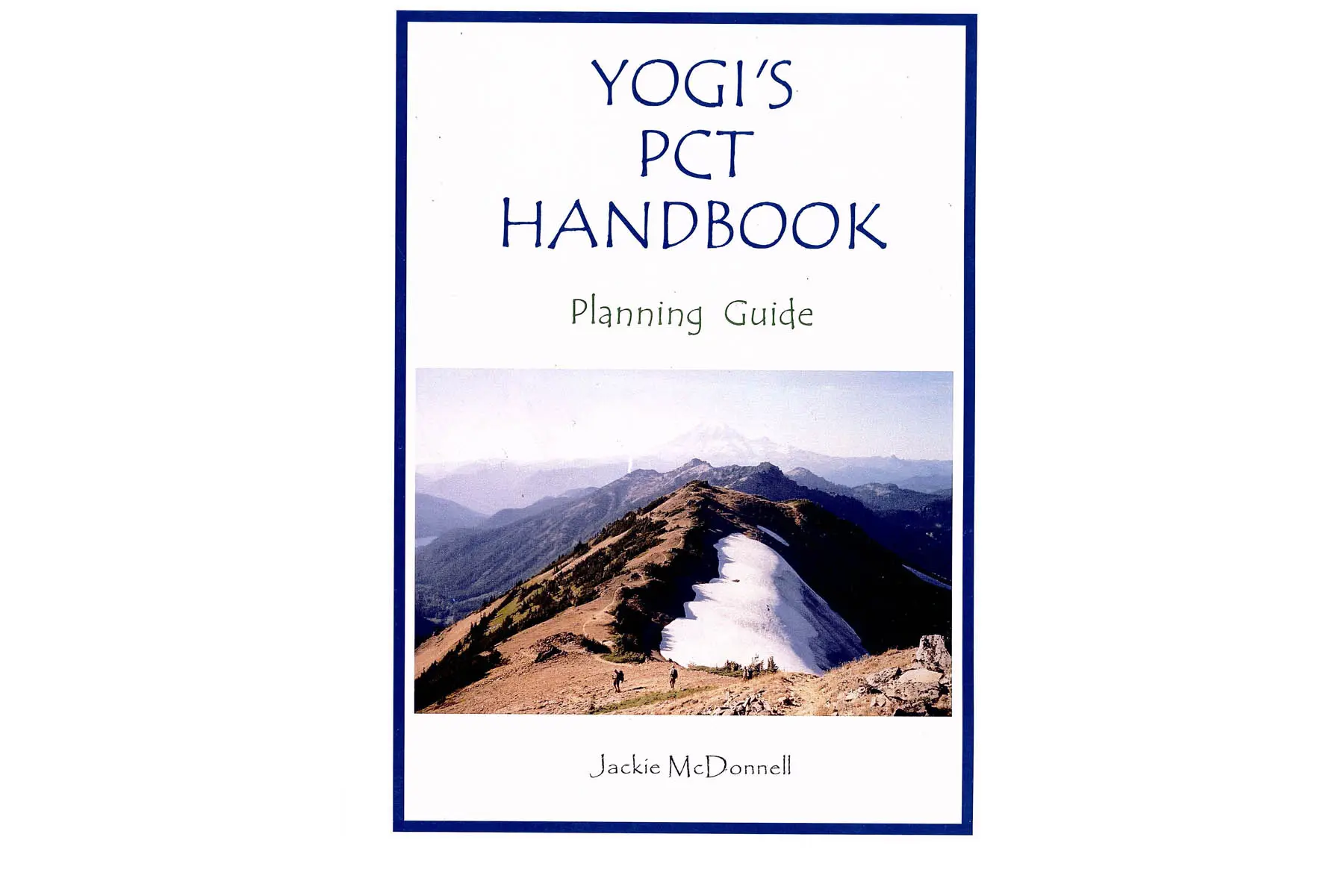
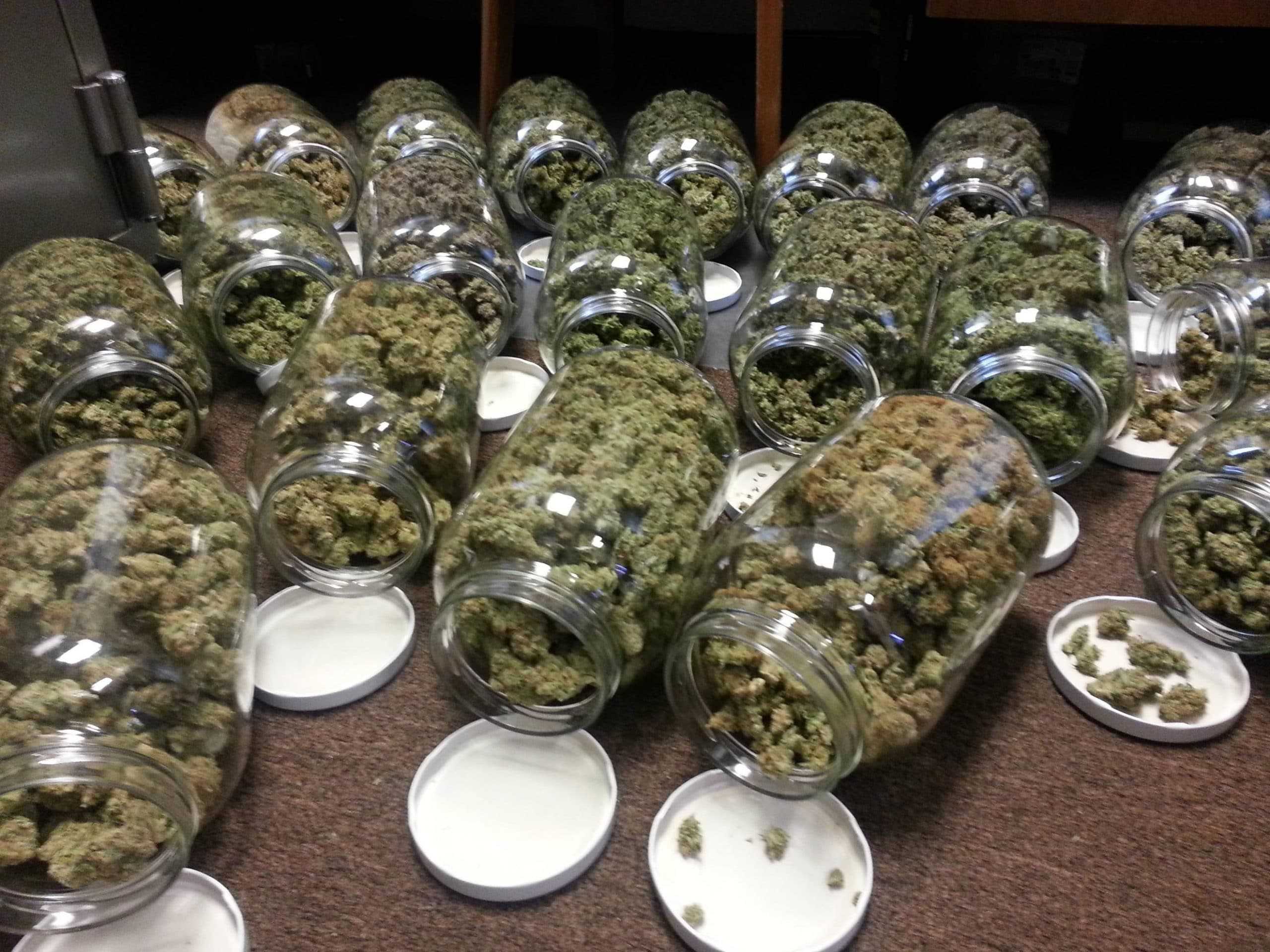
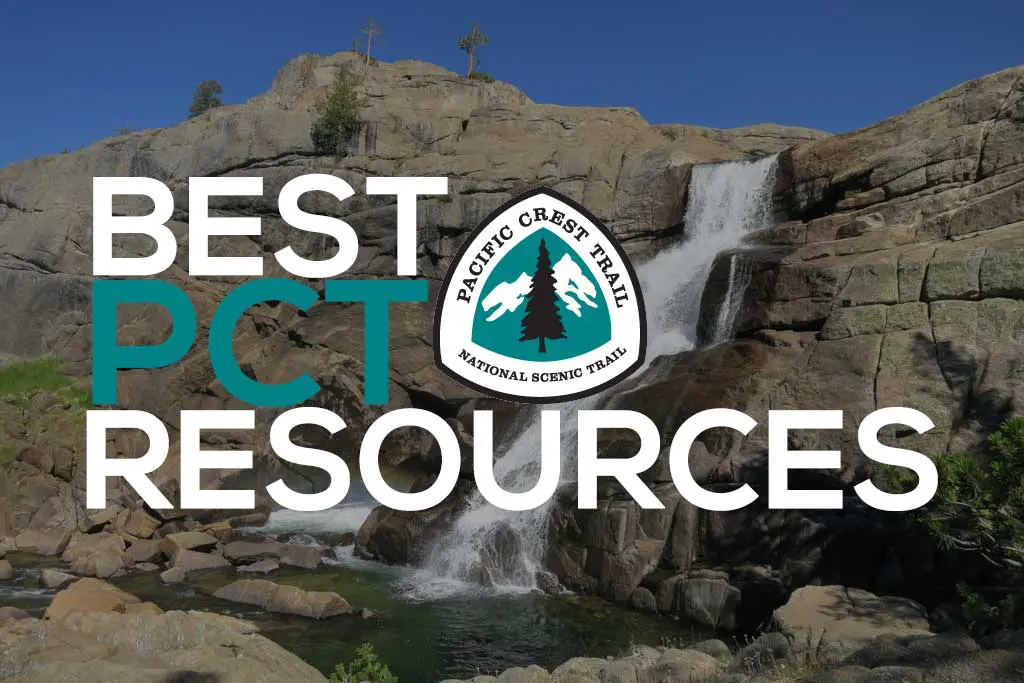
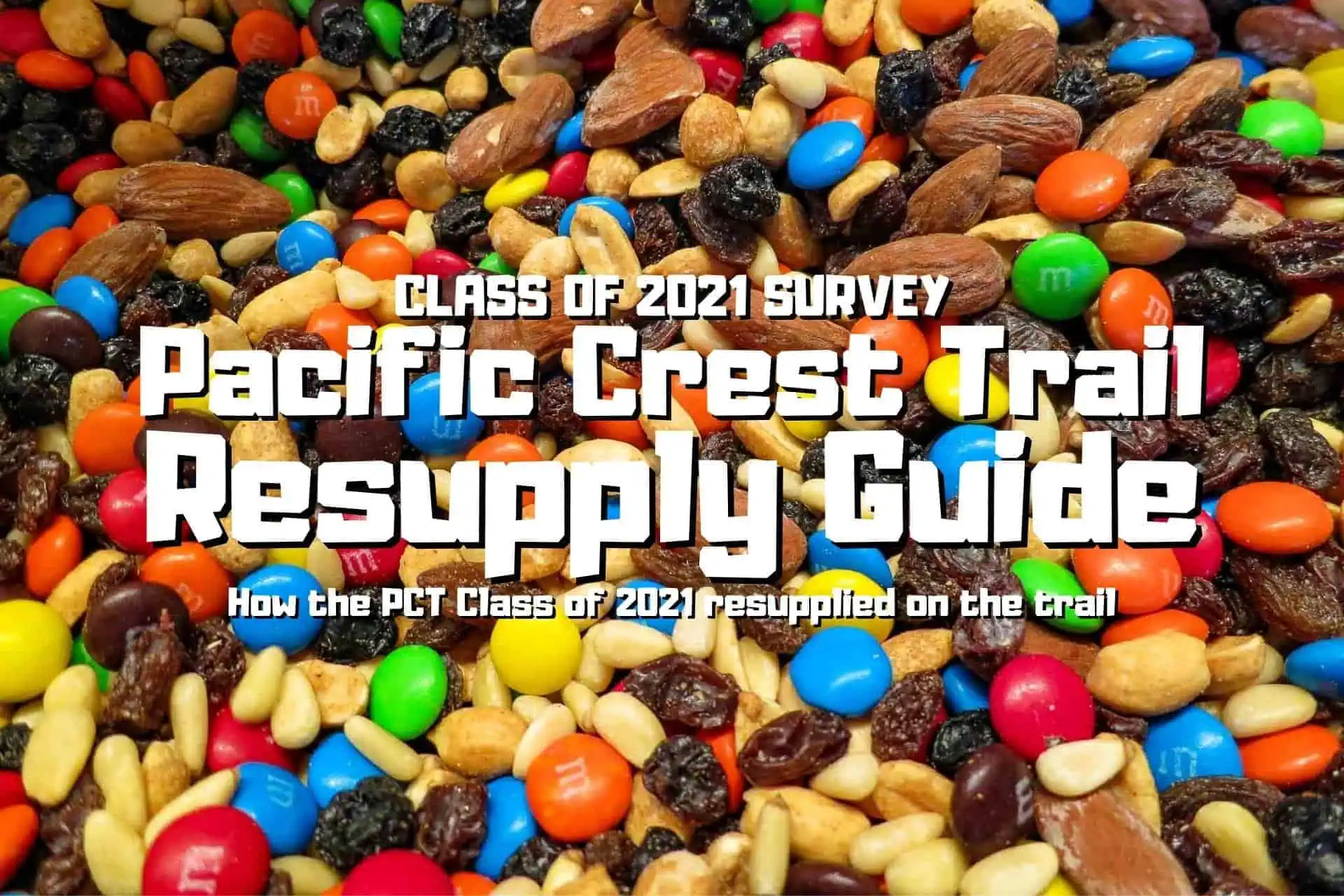

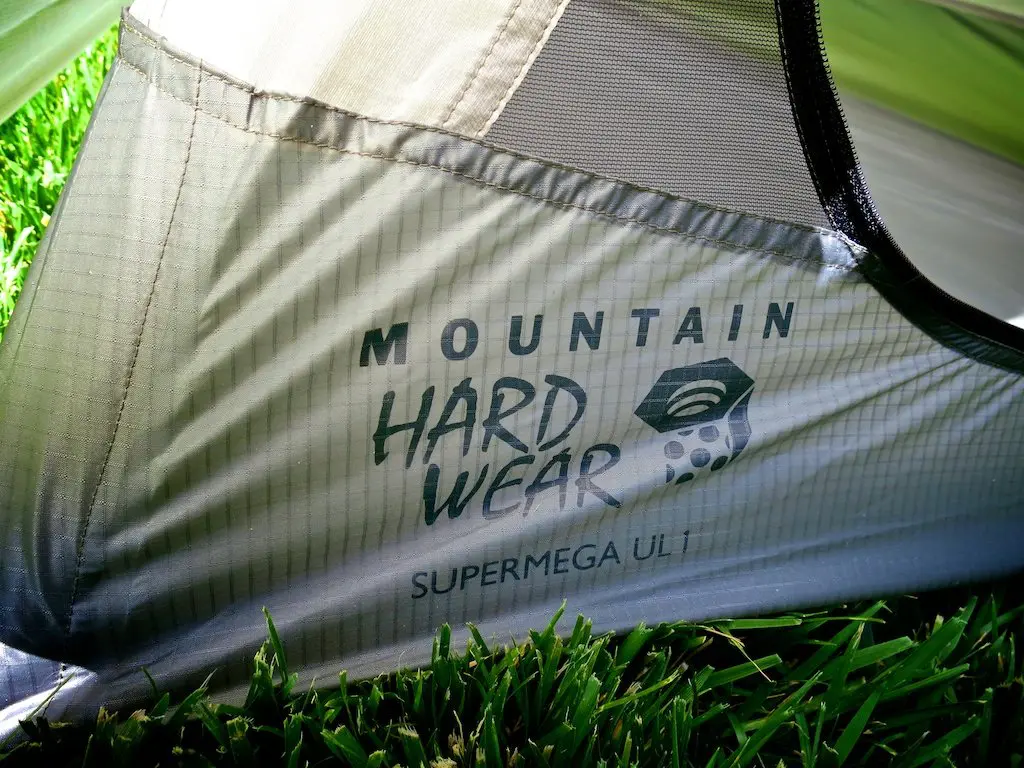
Mac
I wish I could point you to an official Inyo link re Ursack, but there is none. Here is an excerpt I received from Inyo a few years back: “The forest does not provide a list of “approved” containers for Inyo NF, because we don’t have one. We have the forest order.” If you search for Ursack and Inyo you will see several posts confirming that Ursack is allowed. Be sure to look at the date of the posts–although Ursack has been allowed since 2009. There is a lot of misinformation–including from rangers who do not know.
I am the founder and former owner of Ursack. INYO has long allowed Ursacks as meeting their requirement of “In eight specific areas it is mandatory to store food and refuse in a container designed to prevent access by bear.”
Yosemite and SEKI are not as enlightened. They still stick to a six year list of approved canisters. Notably, the Ursack AllMitey has, as far as we know, a perfect record in the wild. The same cannot be said of any of the approved hard sided canisters.
This would be great to confirm! I can’t find this information anywhere on Inyo’s website, do you have a link by any chance?